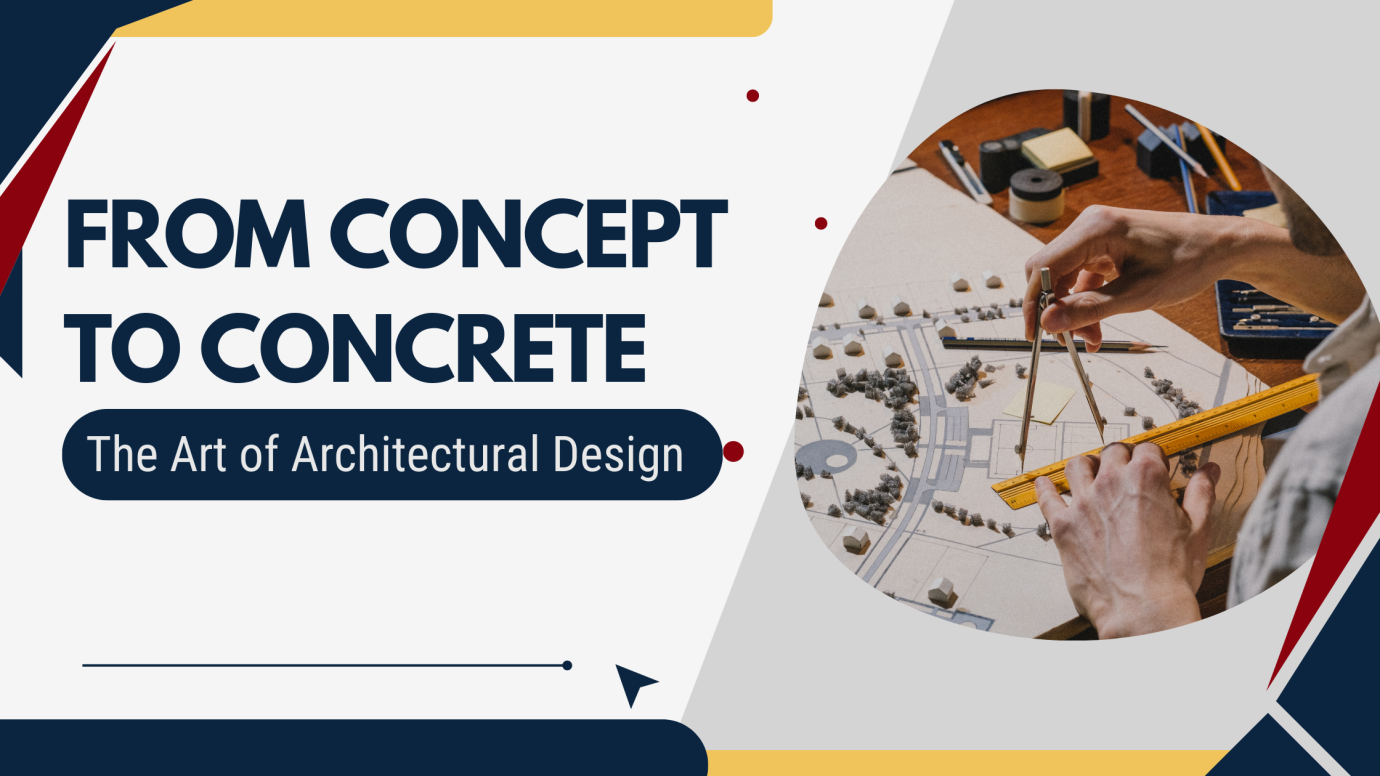Architecture is an art form that requires a great deal of skill and creativity. From concept to concrete, architects must be able to translate their visions into physical structures that are both functional and aesthetically pleasing. In this blog post, we will explore the process of architectural design, from the initial concept all the way to the construction of the final product. We will discuss the challenges that come with designing and constructing buildings, as well as the unique rewards that come with seeing a vision become a reality. Join us as we explore the art of architectural design.
The Importance of Architectural Design
Architectural design plays a crucial role in shaping the world around us. It goes beyond just creating beautiful structures; it encompasses the functionality, sustainability, and impact of a building on its environment. Architects are responsible for creating spaces that meet the needs of individuals and communities, while also considering factors such as energy efficiency, accessibility, and environmental impact. A well-designed building can enhance the quality of life for its occupants, promote social interaction, and even contribute to the overall development of a city. The importance of architectural design cannot be overstated, as it shapes our physical surroundings and influences the way we live, work, and interact with the world.
Understanding the Concept
Understanding the concept is the first step in the process of architectural design. It involves grasping the vision and purpose of the project, as well as understanding the needs and desires of the clients. This stage requires extensive research, brainstorming, and collaboration between architects and clients to ensure that the design aligns with the intended goals. It is important to consider various factors, such as site conditions, local regulations, and budget constraints, while developing the concept. By fully understanding the concept, architects can lay a strong foundation for the rest of the design process, setting the stage for creating a remarkable and functional structure.
Translating the Concept into a Plan
Once the concept has been fully understood, the next step in the architectural design process is to translate that concept into a plan. This involves taking the vision and ideas discussed during the concept phase and transforming them into a detailed blueprint for construction. Architects utilize various tools and techniques to create these plans, such as computer-aided design (CAD) software, scale models, and detailed drawings. The plan must take into consideration all aspects of the design, including structural integrity, spatial layout, and building codes. This phase requires precision and attention to detail, as any errors or oversights can have significant consequences during construction. By effectively translating the concept into a plan, architects ensure that the design can be executed successfully, laying the groundwork for turning the vision into a physical reality.
Designing with Functionality in Mind
When it comes to architectural design, functionality is a key consideration. While aesthetics and creativity are important, a building must also serve its intended purpose effectively. This means that architects must carefully consider the layout, flow, and usability of the spaces they design. They must analyze how people will interact with the building, anticipate their needs, and ensure that the design supports their activities. From optimizing natural lighting and ventilation to creating efficient circulation paths, functionality is at the core of every decision. By designing with functionality in mind, architects create spaces that not only look beautiful, but also enhance the lives of those who use them.
Incorporating Aesthetics into the Design
Incorporating aesthetics into architectural design is a delicate balancing act. While functionality is essential, aesthetics add an element of beauty and emotional impact to a building. Architects must carefully consider elements such as color, texture, shape, and materials to create visually pleasing structures. From the use of natural light to create a sense of warmth, to the strategic placement of windows and openings to maximize views, every design decision contributes to the overall aesthetic appeal. By carefully crafting a harmonious blend of form and function, architects create buildings that not only serve their purpose but also delight the senses and evoke a sense of awe in those who experience them. The incorporation of aesthetics in architectural design is what transforms a structure into a work of art.
Selecting Materials for Construction
When it comes to constructing a building, selecting the right materials is a crucial step in the architectural design process. Architects must carefully consider a variety of factors, such as durability, cost, sustainability, and aesthetics, when choosing the materials that will be used in construction. The selection of materials can greatly impact the overall functionality, longevity, and appearance of the building. Architects must also take into account factors such as climate, site conditions, and local regulations when making their material choices. By carefully selecting materials that meet both practical and aesthetic requirements, architects can ensure that their designs stand the test of time and create a lasting impact.
Overcoming Design Challenges
Architectural design is a complex process that often comes with its fair share of challenges. From navigating tight budgets to finding innovative solutions for unique site conditions, architects face numerous obstacles along the way. Overcoming these challenges requires a combination of problem-solving skills, creativity, and collaboration. Architects must be able to think outside the box and adapt their designs to meet the demands of each project. Whether it’s finding ways to maximize natural light in a space or incorporating sustainable materials into the design, overcoming design challenges is a fundamental part of the architectural process. It is through these challenges that architects are able to push the boundaries of their creativity and create truly exceptional structures.
Working with Contractors and Builders
Working with contractors and builders is a crucial aspect of the architectural design process. Architects collaborate closely with these professionals to bring their designs to life. This partnership involves effective communication, coordination, and problem-solving to ensure that the project is executed according to the vision and specifications. Architects rely on the expertise of contractors and builders to handle the practical aspects of construction, such as scheduling, cost management, and quality control. The success of a project often depends on the seamless collaboration between architects, contractors, and builders. By working together, they can overcome obstacles, address challenges, and ultimately create a structure that exceeds expectations.
Conclusion
In conclusion, the art of architectural design is a captivating and intricate process that combines creativity, functionality, and vision. From the initial concept to the final construction, architects navigate through numerous challenges to transform their ideas into tangible structures that shape our physical environment.
Architectural design plays a significant role in our lives, influencing how we interact with the spaces around us. It goes beyond aesthetics, considering factors such as functionality, sustainability, and the overall impact on the community. Architects must carefully balance these considerations, designing spaces that meet the needs of individuals while harmonizing with the surrounding environment.
Author Bio
My name is William shakes and I’m a business strategist who specializes in sales, outreaching and marketing strategies for businesses of all sizes, currently working at AverickMedia one of the leading providers of Architect email list. I have a deep understanding of what it takes to drive success and have an extensive network of industry experts that I can draw upon when needed.



